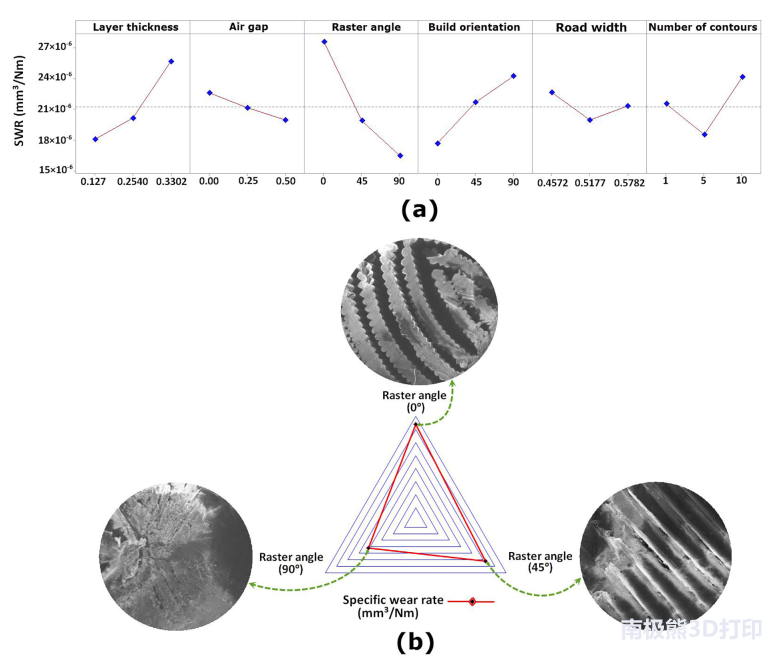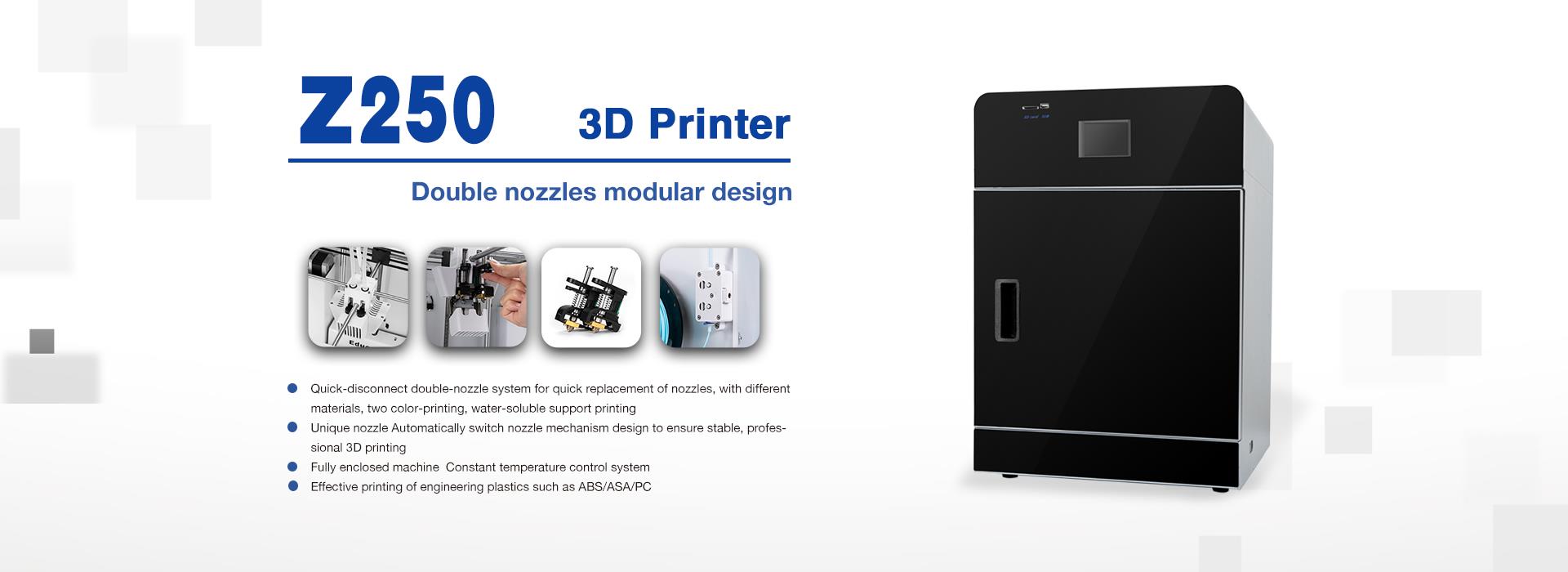Contributed by: Zhu Sizhen, Wang Ling
Recently, researchers in the Department of Mechanical Engineering at the Benedictine Institute of Advanced Engineering and Technology in Libya used a definitive screening design (DSD) method to investigate layer thickness, air gap, fill angle, printing direction, and extruded wire. The effect of FDM 3D printing process parameters such as width and number of housing turns on the wear resistance of PC-ABS prints.

The abrasion test was carried out in a dry environment of 24 ° C with a positive pressure of 10 N on a sample of 35 mm high and 6 mm in diameter, the speed of the friction head was 300 r / min, and the wear amount was calculated after each sample was rubbed for 10,000 revolutions. The formula for calculating the specific wear rate (SWR) is as follows:

The results show that as the layer height increases, the SWR value of the sample increases (ie, the wear resistance decreases). By observing the samples of the 0.1 mm and 0.3 mm layers, the lower layer height setting printed samples have better print quality and surface quality, thereby reducing the friction of the contact faces. The pore structure is created due to the increase in the air gap, thereby reducing the density of the sample and causing the SWR value to decrease. The increase in the filling angle causes a significant decrease in the wear rate because when the filling angle is 90°, the printing direction of the extruded yarn is parallel to the width direction of the sample, and the surface structure of the sample of each filling angle is shown in Fig. 2. Different printing directions produce different degrees of step effects, which affect the wear performance. When the number of turns of the extruded wire and the outer casing is intermediate, the sample has better wear resistance.

The study used a deterministic screening design to study the effect of FDM 3D printing process parameters versus wear rate. It is concluded that the grating angle, layer thickness, printing direction and number of ferrules are the most significant parameters affecting the wear performance of FDM prints. The wear rate decreases as the layer thickness and the printing direction decrease, but decreases as the grating angle increases. This study explores the relationship between process parameters and wear mechanisms, and detects the actual wear and microstructure of the printed parts. It also provides a theoretical basis for the influence of FDM 3D printing process parameters on the wear properties of other materials.
references:
Ahmed MO, Hasan MS, Lal BJ . Analysis of wear behavior of additively manufactured PC-ABS parts [J]. Materials Letters, 2018, 230:261-265.
Contributed by: Zhu Sizhen, Wang Ling Contributed by: State Key Laboratory of Mechanical Manufacturing Systems Engineering
Antarctic bear nanjixiong.com China 3D printing media platform

